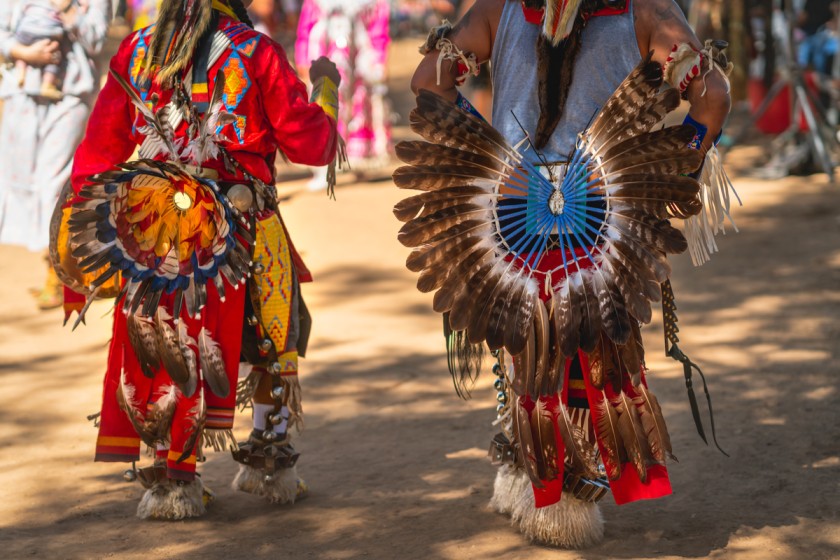5 Reasons why traditional craftsmen should be paid more



Traditional handicrafts ages back a long time. It includes clothes, tools, jewelry, household things, and ceremonial artifacts. Handmade items are generally manufactured by artists using traditional methods from natural materials. Previously underpaid, these craftspeople are now well compensated since more people buy these items.
Many traditional artisans are nearing the end of their careers. An increasing percentage of people choose not to pass on their knowledge to future generations. The difficulty is that they are grossly underpaid, and they cannot afford to educate new employees or develop a viable company strategy. There are various possible reasons for this. In reality, the modern economy has been a sworn enemy of craftsmanship for decades. It has replaced labor-intensive traditional manufacturing processes with low-cost mass production. This has resulted in the abolition of skilled artisans and their critical skills.
The Heritage Crafts Association produces a ‘Red List’ of 100 ancient manufacturing techniques to conserve these traditions. Native American fashion, for example, refers to the design and production of high-fashion traditional American clothing and fashion accessories by the Americas' indigenous peoples. These traditional artisans should be paid more than other workers in their field.
Why should traditional artists be compensated decently, and what factors are driving the growth of the handicraft sector?

Consumers want more customization and innovation. Consumers are more inclined to accept adjustments that improve quality while retaining conventional characteristics compared to traditional items. Product innovation is critical for handicrafts to preserve and grow their market share.
One of the most significant segments of the world economy is the handicraft industry. Consumers throughout the globe place a high value on it. Handicrafts, however, are facing problems as a result of shifting customer preferences and the industrialization process. Innovation is required to ensure the survival of the handicraft sector. Bringing new designs, materials, and techniques enriches the local culture and historical traditions.
If the handicraft sector can provide better goods and services to clients, it may enhance its income. In recent years, the market for handicrafts has expanded dramatically. Consumers are increasingly turning to handmade items, which has increased the demand for handicrafts in recent years. Thanks to various e-commerce platforms and online shopping, consumers now have greater access to it. The shift from traditional to modern styles has also raised the demand for handicrafts. These items have achieved a significant market share because of increased demand from workplaces and residences. Local craftspeople have also significantly benefited from the tourist business.
This article will look at the five reasons behind traditional artists being compensated decently and the factors that might aid the growth of handicraft enterprises.
- Government Programs
Although the government's engagement in the handicraft business has been generally criticized as insufficient, a few initiatives have been undertaken in recent years to assist the craft. Globalization, a lack of market access, and a lack of expertise are essential issues leading to the downfall of the handicraft business.
The government has created several programs to assist the handicraft sector. These were designed to help craftsmen establish and expand their companies. At the same time, the plan assists artists by allowing them to access the market and get raw materials.
In addition, the government has made initiatives to assist the handicraft sector. It has developed the Mega Cluster Scheme to promote and enhance artisans' livelihoods by establishing clusters in rural regions. Marketing assistance programmes have also been implemented to boost access to international trade fairs and increase the exposure of handicrafts. Notably, the National Handicraft Development Programme was implemented to develop the handicraft sector.
- Dedicated Trading Platform Rise
The ascension of dedicated trading platforms aiding the handicraft industry is vital in increasing the worldwide market for Indian handicrafts. These platforms connect craftsmen and customers globally and provide a more customized buying experience. Furthermore, these platforms allow consumers and sellers to interact and market their items. One of the key reasons this business is gaining pace in India is the increased demand for handcrafted items in developed countries.
Until recently, India did not have a centralized forum for showcasing Indian handcraft to a worldwide audience. Before the advent of internet trade platforms, the Indian handicraft industry lacked a unified platform for displaying its goods to the global market. A variety of outlets are now developing to assist these artisans in gaining recognition in local and international markets. These platforms provide free training to suppliers and present a more cohesive and organized picture of Indian crafts in the global market. Consequently, they are opening up new opportunities to expand the handicraft sector while also rewarding traditional craftspeople better.
- Using Technology to Promote Inclusivity:
The use of technology that may help overcome boundaries has been a godsend to the handmade industry. Gaining a global customer base is no longer out of the question if you have a product to market. E-commerce has enabled anybody to sell their items through the internet, no matter where they are, resulting in more fair income distribution. For instance, because of social media sites such as Facebook and Twitter, traditional American clothing and handicrafts garner international recognition.

Handicrafts were a hot issue, as were the factors that supported the growth of this industry in emerging countries. Despite the great demand for handicrafts, the artisans' precarious position demands tailored solutions. Among the government’s activities are making handcrafted objects more viable in global markets and improving artists’ conditions.
- Transforming Artisans' Behaviors:
Changes in artisan behavior are crucial for the development of the handicraft industry. The crafts industry has several obstacles: a lack of established marketing networks, a scarcity of high-quality raw materials, insufficient manufacturing facilities, and weak market and customer connections.
Multifaceted solutions to the difficulties that Indian handicraft makers confront are required. The good news is that this product already has a market. Artisans acquire new skills and create new things to meet market demands to boost their revenues. Fortunately, several social companies in the handicraft industry may assist craftspeople in expanding their size and effect. With the entrance of technology, there has been tremendous change in the behavior of both customers and retailers of handicrafts.
The initial strategy for changing artisan producers' behavior is to eliminate the influence of intermediaries. While traditional artists see intermediaries as exploiters, they sometimes double as middlemen to improve livelihood. By removing the need for intermediaries, artisans can focus on the manufacturing process directly and offer high-quality items at competitive costs.
Aside from the emergence of a middleman-free economy, artists also act as middlemen. Historically, the middleman served as a middleman, increasingly threatening the conventional trader's job. However, some artists act as middlemen by supplying raw materials and obtaining them from merchants. By doing so, they are assuming the role of traditional intermediaries and safeguarding the craft's long-term viability.
- Export market vs. Imported products -
Which is more critical: the export market or the imported goods themselves? Indian traditional handicrafts have a relatively tiny share of the global business, but their export potential is enormous because of the expanding global market. According to industry data, handcrafted goods are expected to be worth $1091.2 billion by 2024, with a compound annual growth rate of 11.5 percent from now until then. Export markets for Indian handicrafts have grown by more than 40% in the last five years, with more than 75% of all handicrafts exported outside India. More than a dozen countries purchase traditional handicrafts, with the United States’ conventional American clothing accounting for nearly a third of total Indian handicraft exports.
The domestic and international markets for Indian handicrafts, which abound throughout the country, are enormously promising. The government has taken the necessary steps to ensure that these items are competitive and reach the global market. The general quality of the handicrafts manufactured should be the second factor to be considered. Price may be affected by factors such as the cost of the goods and their quality.
Putting It All Together
According to statistics on handmade exports, it can be concluded that, in this era of globalization, the traditional handicraft business has immense potential in both domestic and foreign markets.
Artisans are fragile and need special attention to improve their life; hence they should be paid more. The government has already taken substantial steps in this direction by establishing regulations that will increase the competitiveness of our handicraft items on the worldwide market and enhance a lot of our craftsmen on this path. Tradition-based American handicraft businesses benefit significantly from what was discovered via this research.Fashinza, the B2B garment manufacturing platform, has created a detailed article to assist you on the five reasons why traditional artists should be well-rewarded and on the variables that may generally increase the growth of handcrafted enterprises.



















